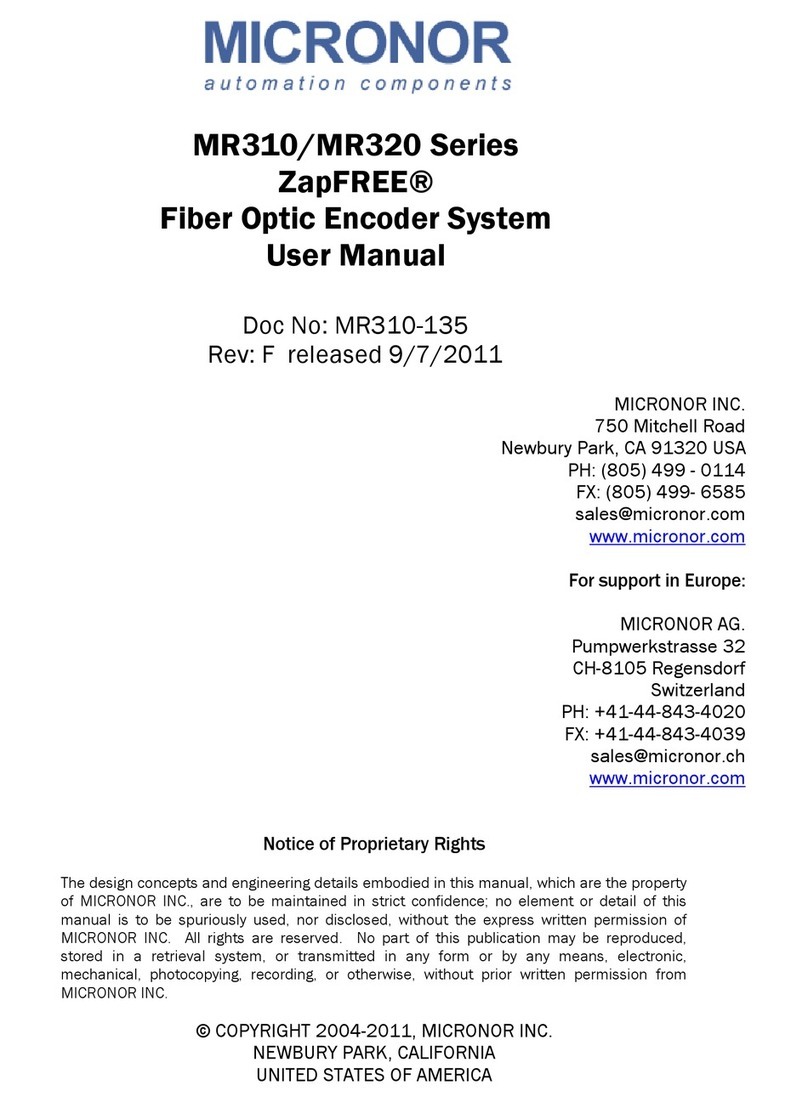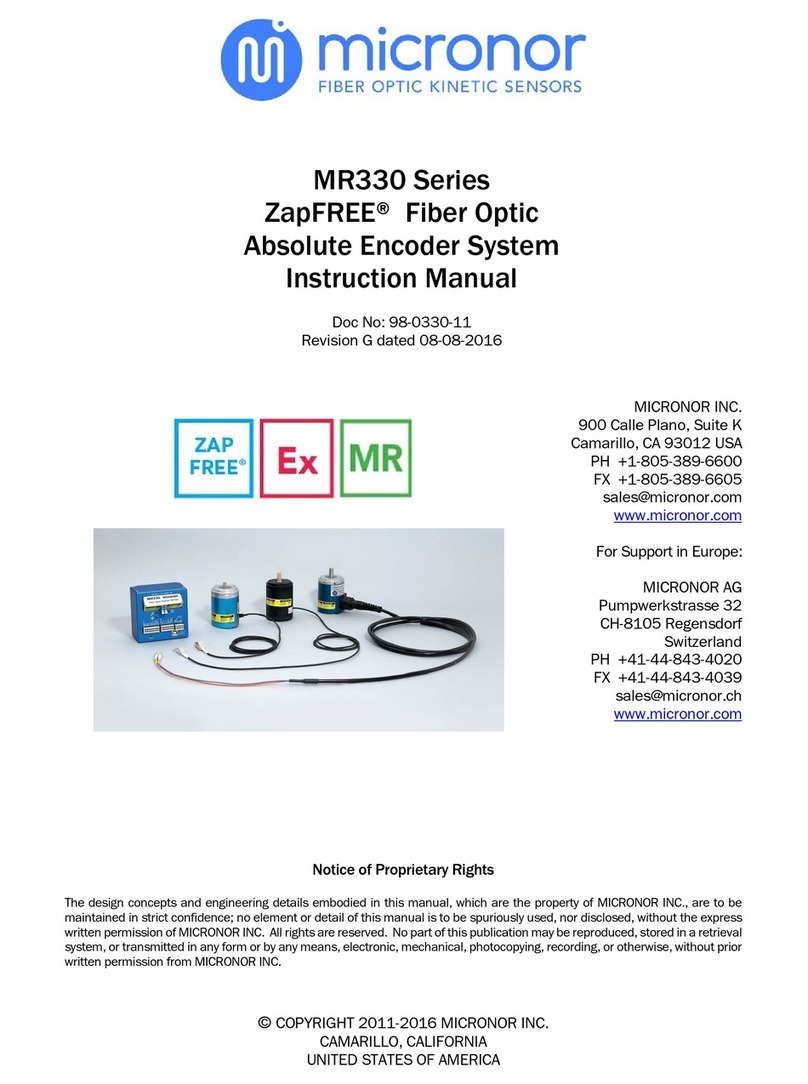
MICRONOR INC MR320 ZapFREE® Fiber Optic Encoder System Installation Guide
Page 2 of 13
This Setup Guide is intended to guide you through the installation and
initial setup. A comprehensive User Manual is supplied on the Zappy™
CDROM (supplied with the MR320 module) or can be downloaded via this
link: http://www.micronor.com/products/files/MR320/ZAPPY.zip
A complete fiber optic encoder system consists of:
•Sensor (MR322, MR324, MR326 or MR328)
•Controller Module (MR320)
•Additional Duplex LC optical assemblies, if required (MR320-D06CXX or user supplied cabling.)
•Additional Duplex LC Mating Adapters, if required to interconnect link cables (MR320C or user supplied)
IMPORTANT SYSTEM NOTES
Always keep Optical Connectors Clean!
Two-way optical loss cannot exceed 12.5 dB
Each connector must meet Duplex LC-UPC performance with multimode return loss > 24dB
What optical signals do you need?
If you require only the direct A+B quadrature outputs,
then this Quick Setup Guide is all you should need.
If you plan to use the Multiplier, Divider, Position Counter,
Analog Outputs or Serial Interface, then you to need to
install the ZAPPY™software and reference the detailed
MR310/MR320 User Manual. These files are included on
the Resource CD supplied with the MR320 module or can
be downloaded via a single ZIP file at:
http://www.micronor.com/products/files/MR320/ZAPPY.zip
Quick Connections:
Step 1 Connect optical link between Sensor and Module
Step 2 For A+B push-pull quadrature outputs, connect to App and Bpp terminals.
For A+B line driver outputs, connect to A+/A-/B+/B- terminals
Step 3 Connect +24VDC to +Vs and 0V to GND terminals.
Step 4 For first time installation, it is necessary to “calibrate” the encoder system. While rotating the Encoder
shaft,use the Wago tool to depress the RESET button on the Module. If the Aand BLED lights blink
ON/OFF, then system is "calibrated" and functioning properly.































